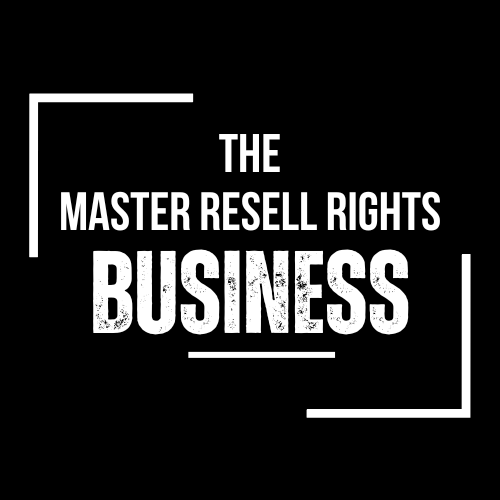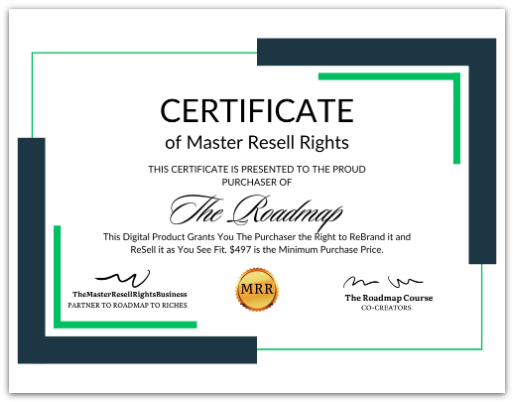
What Is the Difference Between MRR and PLR?
What Is the Difference Between MRR and PLR?
You’re delving into the digital marketing world and you’ve come across MRR and PLR. But what’s the difference? It can be a bit confusing, right?
Don’t worry! This guide will break down these terms for you, comparing them so you’ll know exactly what you’re dealing with.
Let’s simplify digital terminology together and strategize your next marketing move!
What is MRR?
With MRR, you’re able to sell the resell rights and sometimes even the master resell rights of a product, but remember, you can’t modify it from its original form. It’s like having a golden ticket – a license that allows you to cash in on someone else’s creation without altering its essence. But don’t confuse this with owning the copyright. That still belongs to the original creator.
You might be wondering how this works? Well, it’s all about strategic marketing. When buying an MRR product, your main goal is not just to sell that product but also its resale rights. This creates a multiplier effect for potential profits because now your buyers can also sell that same product.
But there are rules! You’ve got to stick strictly within the bounds of what your specific MRR license permits. Violate these terms and you risk legal repercussions – something nobody wants!
MRR is not just about making quick money; it requires careful planning and analysis too. You need to understand what sells well in your niche market and invest wisely in products with good profit margins.
It might seem like easy money but getting an ROI on MRR products can be tricky if not handled properly. Remember: quality trumps quantity every time when it comes to digital products.
There’s another twist too: Private Label Rights (PLR). With some licenses, you may have the opportunity to apply for PLR status which gives extra privileges such as modifying or rebranding the product as your own.
So where do you stand? Don’t rush into anything until fully understanding MRR – know its benefits but also respect its boundaries.
What is PLR?
You’ve probably heard about PLR, or Private Label Rights, which let you modify and rebrand a product as your own. This powerful tool grants you the most freedom when it comes to using and repurposing content. In fact, it’s considered one of the best types of product licenses available.
With PLR, you’re essentially purchasing the ‘ownership’ of a product along with its individual copyright. You can make changes as minor or major as you like before setting your own price or even offering it as a freebie to attract potential customers.
One significant advantage of PLR is that you usually gain access to source files used to create the product. That means editable formats like Word documents, software code, text files and more are all yours to tweak to suit your needs. The range of products available under PLR is varied too – from videos and eBooks to software and articles.
However, before jumping into acquiring any PLR products, there’s something important you should do: review the specific terms and conditions set by each provider because they might have unique restrictions on usage and distribution.
Now compare this with Master Resell Rights (MRR). With MRR, although you can resell a product granting others the right to sell it again, you won’t receive source files for editing purposes nor can your customers grant further master resell rights. Basically put, in terms of flexibility and control over content alteration –PLR takes home the trophy.
MRR vs PLR Compared

Comparing the two, it’s clear that while reselling rights for both types of products have their perks, private label rights offer unprecedented control and flexibility. You’re not just buying a product to sell on as is; you’re gaining the ability to tailor it to your audience and make it truly your own.
With MRR or master resell rights, you can sell the product and also the right for others to sell it. It’s like being a wholesaler in digital terms. But there are still restrictions – ownership isn’t really yours. You can’t claim authorship nor modify the content.
On the other hand, PLR or private label rights are akin to having an invisible creative partner. This type of license allows you:
- To put your name as author,
- To reshape the product according to your vision,
- And even convert its format (from eBook into an audio piece, for instance).
Feeling empowered yet? It should because with PLR products, you’ve got more than just resale rights – you’ve got transformational power! Once significantly altered, these products essentially become new creations that you can copyright.
Just remember this cautionary note: always verify what exactly you’re buying. Creators may have unique terms attached to their products so be thorough with your investigation before making a purchase.
RR
In contrast to other types of resell rights, RR or Resell Rights don’t allow your customers to sell the product further; they’re limited to personal use only. This means that once you’ve sold a product with RR, the buyer doesn’t have permission to resell it. It’s akin to selling a book—the purchaser can read it but can’t duplicate and sell copies.
When strategizing your digital business model, understanding this distinction is crucial. With RR, you’re essentially operating a ‘one-and-done’ sales process. The end-user obtains the product for their consumption without any downstream resale capabilities. This structure ensures control over distribution and maintains value in direct purchases from you.
Comparatively, Master Resell Rights (MRR) permit customers not just to use the product personally but also distribute it further down the line. MRR creates an opportunity for multi-tiered revenue streams as every sale has potential secondary or tertiary sales attached.
On the other hand, Private Label Rights (PLR) offer even more flexibility by allowing buyers full rights over the product including alteration of content and branding as their own before selling onwards.
So where does this leave RR? Well, if your objective is maintaining tighter control on your products’ distribution while ensuring direct profits from every sale go into your pocket without dilution through multiple resale channels, then RR might be your ideal choice.
Remember though: each type of right carries its unique pros and cons. Analyze carefully what aligns best with your strategic goals before choosing which type of resell rights suits you best.
Personal Use Rights
Let’s delve into Personal Use Rights, which restrict a product’s use to personal consumption only, meaning it can’t be resold. You’re allowed to consume the material in any way you see fit for your own learning or enjoyment, but you don’t have permission to pass it on or sell it.
Personal Use Rights are quite different from other licenses such as MRR (Master Resale Rights) and PLR (Private Label Rights). When you buy a product with MRR or PLR, you get rights that allow you to modify and resell the product. However, with Personal Use Rights, the content is strictly for your eyes only.
Why does this matter? Understanding these licensing terms isn’t just about knowing digital terminology; it’s strategic knowledge that impacts how you conduct business online. You need to respect these terms when buying and selling products. If not, there could be legal consequences.
When purchasing digital products, always check what type of license comes with them. This will guide your usage of the content and prevent potential copyright issues down the line. For instance, if a product comes with Personal Use Rights and you try to resell it without proper authorization from the original creator – that’s infringement.
Remember: Not all files are created equal either. Some licenses may permit only specific file formats (like JPG, GIF or PNG) for resale while others might require conversion of editable files to PDF when reselling.
In conclusion: Respect each product’s set of rules around usage rights. It makes good business sense strategically – and legally – speaking!
Conclusion
So, you’ve got the lowdown on MRR and PLR now. Remember, MRR lets you resell the product and PLR gives you full control to edit or modify it.
They’re both great ways to boost your digital marketing strategy, but use them wisely! Always respect copyright rules and keep your content fresh and unique.
Get out there and make your mark, digitally savvy entrepreneur!
–The MRR Business Authority Team


This is a pretty cool page. One of the best posts I’ve found in quite a while. I hope to see more content like this.
It’s really good to find great content such as this. Keep up the good work.